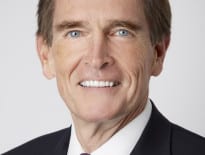While a higher interest rate environment could pose a few hiccups for an economy accustomed to near-zero rates for so long, many lenders say that despite those minor bumps, a rising tide should lift all boats.
When the Federal Open Markets Committee meets this week to decide whether to raise its target interest rate, it will take into account strong hiring and low unemployment. While the Fed declined, yet again, to raise rates at its last meeting, November’s strong jobs report prompted many economists to predict that the Fed would finally move interest rates for the first time since it cut the federal funds rate late in 2008.
In other words, all signs point to yes.
Lenders told Banker & Tradesman that even for those borrowers who have booked floating-rate loans in recent years, the impact of a rate increase should be largely positive, particularly for business borrowers.
For the business owners that Rockland Trust serves, an increase in interest rates may actually be a welcome change, said Gerard Nadeau, executive vice president in charge of commercial banking at the bank.
“I think for the small, medium and middle-market businesses, I don’t think that they would use this as a reason not to take on credit if there was a good business reason for it,” he said. “I don’t think it’s enough of an increase to deter that action.”
The Fed has long indicated that it’s likely to move slowly and gradually. Many expect the agency to move rates just 25 basis points and then “wait and see” before taking any further action. While any action on the Fed’s part will be largely symbolic in terms of dollars and cents, it would still be a welcome sign that the federal banking regulator is feeling bullish on the economy.
“I still think it’s not going to be meaningful for interest expense for commercial borrowers – or consumer borrowers for that matter,” said Robert Reidl, head of capital markets at Dealstruck, a fintech startup that specializes in small business lending. “For us, our average loan size is $100,000. … 25 basis points on that is $250. On a monthly basis, that’s twenty bucks.”
Even assuming the Fed raises interest rates by 100 basis points over the year to come, he said, “bringing it to our typical customer, that’s $1,000 for the year. That’s less than a hundred bucks a month. I don’t see it moving the needle personally.”
I’ll Trade You …
For commercial real estate investors, however, a change in interest rates could be another story entirely.
“Many of the commercial real estate investors over the last eight or nine years have been using short-term rates to borrow, buy and leverage real estate,” Nadeau said.
“In terms of the percentage of their operating expenses, interest expense is much smaller for the average distributor, manufacturer, or service company, as opposed to someone investing in commercial real estate,” he said. “Those commercial real estate investors have been operating with short-term, floating rate loans, which have been able to help them get greater returns from real estate because they’re borrowing at very short-term rates.”
That means those borrowers – for whom interest expenses could comprise as much as 70 or 80 percent of their operating costs – have been keenly interested in interest rate swaps that would allow them to swap their floating rate debt for a fixed rate from a third party, Nadeau said. He estimated that Rockland Trust had about as many lending relationships with commercial real estate investors as it did with more traditional businesses that would be less affected by a rate increase.
“That group has been thinking very much about that increase, and I’ve had many client discussions in the last couple months about it,” he said. “We’re starting to see more commercial real estate investors wanting to fix their rates on their loans for as long a time as possible.”
Neil Berdiev, a consultant at DNB Advisory, echoed Nadeau’s comments about interest rate swaps and said that it’s key for those borrowers to fully understand those products and especially any worst-case scenarios arising from an interest rate swap. In Berdiev’s words, “not all swaps are held equal,” and smaller institutions may not know all the risks involved in those derivatives.
But on the whole, Berdiev is optimistic, and he said the banking industry is well-prepared for a rate increase largely because it’s now stronger than ever.
“Banks have gotten leaner. They’ve become a lot more efficient, they’ve cut excess overhead, squeezed everything out of the net interest margin – in part to survive this cycle and in part for the rising interest rates,” Berdiev said. “A lot of banks have gotten into new markets and are still growing, and if you look at Massachusetts, we’ve done very well compared to other markets.”




 |
| 




